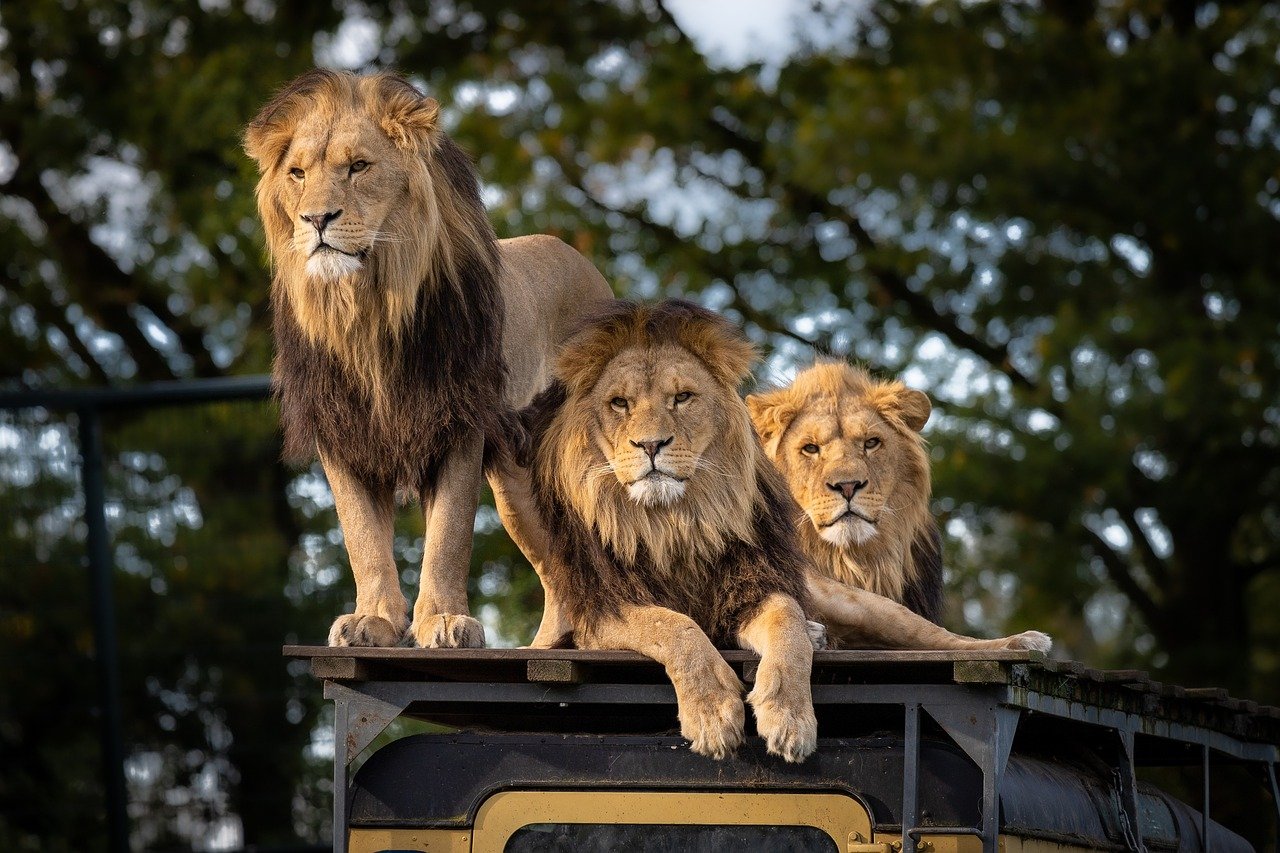The world is home to some majestic creatures, and among them are the big cats. These animals are not only symbols of strength and beauty but also vital to the ecosystems they inhabit. Unfortunately, they are facing an alarming threat: rapid habitat loss. This article delves into the plight of six magnificent big cats grappling with dwindling homes. Their stories are a call to action for animal lovers and conservationists alike.
Tigers: The Striped Kings in Peril
Tigers, often hailed as the kings of the jungle, are facing a dire situation. Their habitat, which once spanned across vast territories in Asia, has been reduced to isolated pockets. Human activities like deforestation, agriculture, and urbanization have played a significant role in this decline. As their natural homes shrink, tigers find themselves in closer proximity to human settlements, leading to increased human-wildlife conflict. Despite being a symbol of power and grace, the tiger’s roar is growing faint in the wild. Conservation efforts are underway, but the road to recovery is long and challenging. The tiger’s plight is a stark reminder of the urgent need to preserve natural habitats for future generations.
Lions: The Majestic Pride Under Threat

Lions are synonymous with the African savannas, yet their majestic presence is under threat. Rapid habitat loss due to expanding agriculture and human encroachment has drastically reduced their living spaces. Once roaming freely across vast stretches, lions now face fragmented habitats. This isolation affects their natural behaviors, including hunting and breeding. The reduction in prey availability further exacerbates their struggle for survival. While they remain a symbol of courage and royalty, the reality for lions is a struggle against the odds. Their diminishing numbers highlight the need for better land management and conservation strategies to ensure their legacy continues.
Leopards: The Stealthy Hunters in Decline
Leopards are known for their stealth and adaptability, yet even these agile hunters are not immune to habitat loss. Historically found in diverse landscapes, from African savannas to Asian forests, leopards now face rapidly shrinking territories. Urban development and agricultural expansion are primary culprits, leaving leopards with fewer places to hide and hunt. This loss of habitat forces them into closer contact with humans, often leading to tragic conflicts. Despite their resilience, leopards are struggling to maintain stable populations. Conservationists are working tirelessly to create corridors and protected areas to give these magnificent cats a fighting chance.
Cheetahs: The Fastest Cats Running Out of Space
Cheetahs, the fastest land animals, are racing against time as their habitats disappear. Once thriving in vast numbers across Africa and parts of Iran, cheetahs now occupy only a fraction of their former range. The encroachment of farmland and human settlements has drastically reduced their hunting grounds. With limited space, cheetahs face challenges in finding food and mates, crucial for their survival. Their unique adaptations for speed are rendered useless without open plains to sprint across. As their numbers dwindle, the cheetah’s struggle is a poignant reminder of the impact of human activities on wildlife.
Snow Leopards: The Ghosts of the Mountains at Risk
Snow leopards, often referred to as the “ghosts of the mountains,” are facing a grave threat to their icy habitats. Found in the rugged terrains of Central Asia, these elusive big cats are losing their homes to climate change and human encroachment. As global temperatures rise, the snow-covered peaks they call home are receding. Additionally, increased mining and infrastructure projects in these regions further encroach on their territories. The snow leopard’s plight is a testament to the far-reaching effects of environmental change. Protecting these majestic creatures requires international cooperation and a commitment to preserving their mountainous domains.
Jaguars: The Silent Stalkers of the Jungle in Distress
Jaguars, the silent stalkers of the jungle, are facing a crisis as their lush habitats are being destroyed. Found primarily in the rainforests of South America, jaguars are losing their homes to deforestation and agricultural expansion. The Amazon rainforest, their primary stronghold, is being cleared at an alarming rate for cattle ranching and crop production. This habitat loss not only threatens the jaguar’s survival but also jeopardizes the rich biodiversity of the rainforest. Jaguars are vital for maintaining the ecological balance, and their decline could have cascading effects on the ecosystem. Efforts to protect the Amazon and its inhabitants are crucial for the future of these enigmatic cats.
In conclusion, the rapid habitat loss faced by these six big cats is a clarion call for all of us. Their struggles highlight the urgent need for concerted conservation efforts to preserve the natural world. As we strive to protect these majestic creatures, we also safeguard the intricate ecosystems they inhabit. The survival of these big cats is not just about saving individual species but preserving the delicate balance of our planet’s biodiversity.

Growing up traveling and experiencing new cultures and wonders, I have had a passion for nature, adventuring, photography, and videography. I am currently working towards a BSc in Biodiversity and Ecology at Stellenbosch University, and I hope to specialise in Marine Sciences one day.
Please send any feedback to Feedback@animalsaroundtheglobe.com






